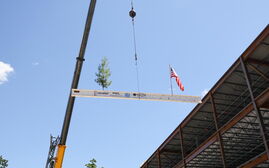Processing Your Payment
Please do not leave this page until complete. This can take a few moments.
- News
-
Editions
-
- Lists
-
Viewpoints
-
Our Events
-
Event Info
- Women's Leadership Forum 2025
- On the Road with Mainebiz in Bethel
- Health Care Forum 2025
- On The Road with Mainebiz in Greenville
- On The Road with Mainebiz in Waterville
- Small Business Forum 2025
- Outstanding Women in Business Reception 2025
- On The Road with Mainebiz in Bath
- 60 Ideas in 60 Minutes Portland 2025
- 40 Under 40 Awards Reception 2025
- On The Road with Mainebiz in Lewiston / Auburn
- 60 Ideas in 60 Minutes Bangor 2025
Award Honorees
- 2025 Business Leaders of the Year
- 2024 Women to Watch Honorees
- 2024 Business Leaders of the Year
- 2023 NextUp: 40 Under 40 Honorees
- 2023 Women to Watch Honorees
- 2023 Business Leaders of the Year
- 2022 NextUp: 40 Under 40 Honorees
- 2022 Women to Watch Honorees
- 2022 Business Leaders of the Year
-
-
Calendar
-
Biz Marketplace
- News
-
Editions
View Digital Editions
Biweekly Issues
- April 21, 2025 Edition
- April 7, 2025
- March 24, 2025
- March 10, 2025
- Feb. 24, 2025
- Feb. 10, 2025
- + More
Special Editions
- Lists
- Viewpoints
-
Our Events
Event Info
- View all Events
- Women's Leadership Forum 2025
- On the Road with Mainebiz in Bethel
- Health Care Forum 2025
- On The Road with Mainebiz in Greenville
- On The Road with Mainebiz in Waterville
- + More
Award Honorees
- 2025 Business Leaders of the Year
- 2024 Women to Watch Honorees
- 2024 Business Leaders of the Year
- 2023 NextUp: 40 Under 40 Honorees
- 2023 Women to Watch Honorees
- 2023 Business Leaders of the Year
- + More
- 2022 NextUp: 40 Under 40 Honorees
- 2022 Women to Watch Honorees
- 2022 Business Leaders of the Year
- Nomination Forms
- Calendar
- Biz Marketplace
Business Leaders: Tom Watson is a developer that’s stuck with Portland through thick and thin
 Photo / Tim Greenway
Tom Watson, founder and chairman of Port Property, has committed to building another 800 housing units in Portland, even as other developers have shied away from the city and its increasingly stringent development regulations.
Photo / Tim Greenway
Tom Watson, founder and chairman of Port Property, has committed to building another 800 housing units in Portland, even as other developers have shied away from the city and its increasingly stringent development regulations.
More Information
Developer Tom Watson, principal of Port Property, has a total of 2,000 housing units in greater Portland and Wilmington, N.C., and another 2,000 in the construction or planning stages. Maine is in a housing crunch and there’s a need for housing in both the affordable and market-rate categories.
Even as Portland adoption of the Green New Deal, rent control measures and exclusionary zoning have sent other developers running for less-regulated cities, Watson and his team have vowed to stick with Portland. In the past year, it continued to acquire buildings and a parking garage in Portland, and the company is winding up construction of the 171-unit Armature apartment building in the Bayside neighborhood — where Port Property has told the city it expects to build another 800 units in coming years.
Mainebiz: I believe you moved here from Massachusetts, first coming up in 1993. What attracted you to Portland at that time?
Tom Watson: I was an ultimate frisbee player and I came up to play in a game at Fort Williams in Cape Elizabeth. The Portland team took me out for beers afterwards to Gritty’s. The beer, the frisbee, the people, the architecture, all stupendous. I knew I was home here in Portland.
MB: In 2017, the city started marketing the former maintenance garage properties. Was there a massive rush to those properties — or how would you describe the reaction from developers?
TW: Of the six properties for sale, we were most interested in two — the contiguous 82 Hanover and 52 Hanover, both of which were formerly working garages for Portland’s various fleets of vehicles. I think there were maybe 13 different developers vying for the sites. We were fortunate enough to be chosen by the City Council to develop 52 and 82. We promised the City we would move our property management company from Grant Street in Parkside to 82 Hanover and essentially be immersed in the neighborhood. We also promised to create 23 condos, eight of which would be affordable, at our Grant Street site, bringing much needed home ownership to that area. We delivered on all promises.
MB: What did you see as the potential for the Bayside neighborhood?
TW: During the 1980s, I was a painter and a sheetrocker in Boston and worked mostly in the South End which at the time was rough with a lot of warehouses and dilapidated brownstones. We made them beautiful homes, offices and storefronts. When we saw the garages in West Bayside we knew we could breathe new life into them as I had done in Boston’s South End and as we had been doing to many of the 1900-era downtown Portland apartment buildings over the last two decades.
MB: How many housing units do you have overall between Maine and North Carolina?
TW: Between Portland, Greater Portland and Wilmington, N.C., we own over 2,000 units.
MB: With all this housing and the influx of new residents we’ve seen in Maine, where are your tenants coming from?
TW: Historically, 75% of new residents came from Portland and other parts of Maine and 25% came from other states. That has flipped in the last few years. Today, 60% of residents are coming from away, and about 40% are coming from Maine, including Portland.
MB: Earlier this year, you submitted a master plan to the city Planning Board that calls for 800 units of housing. How do you envision rolling that out? What impact has the Green New Deal had on your plans?
TW: This project is being spearheaded by our CEO, John Laliberte. John is working closely with the city and the neighborhood to deliver 800 units in five phases over the span of 10 years. The first proposed phase consists of two buildings — a 201-unit affordable housing project and a 120-unit market rate housing project. All buildings in the Master Development Plan include a mixed-use retail element on the ground floor.
MB: Is Port Property focused on housing as a driving force?
TW: I’ve never seen housing as a driving force. I always say we’re the tail, not the dog. By that I mean we tend to respond to need as opposed to creating need. The smaller and bigger companies calling Portland their home — they are the driving force … and we want to make sure they have homes they’ll love.
MB: From a big picture economic development idea, What else does the Portland area need?
TW: I believe Portland is being discovered by the rest of the country as a great place to live and work. While Richard Florida’s book ‘The Rise of the Creative Class’ is nearly 10 years old, it speaks poignantly to what is going on in Portland today, that people are moving to what they consider to be cool and hip places and the jobs are following. Portland is that cool and hip place. And jobs are following.
About Port Property
Port Property
www.portproperty.com
188 State St., Portland
What it does Development and management of apartment buildings and mixed-use properties
Employees 58














0 Comments